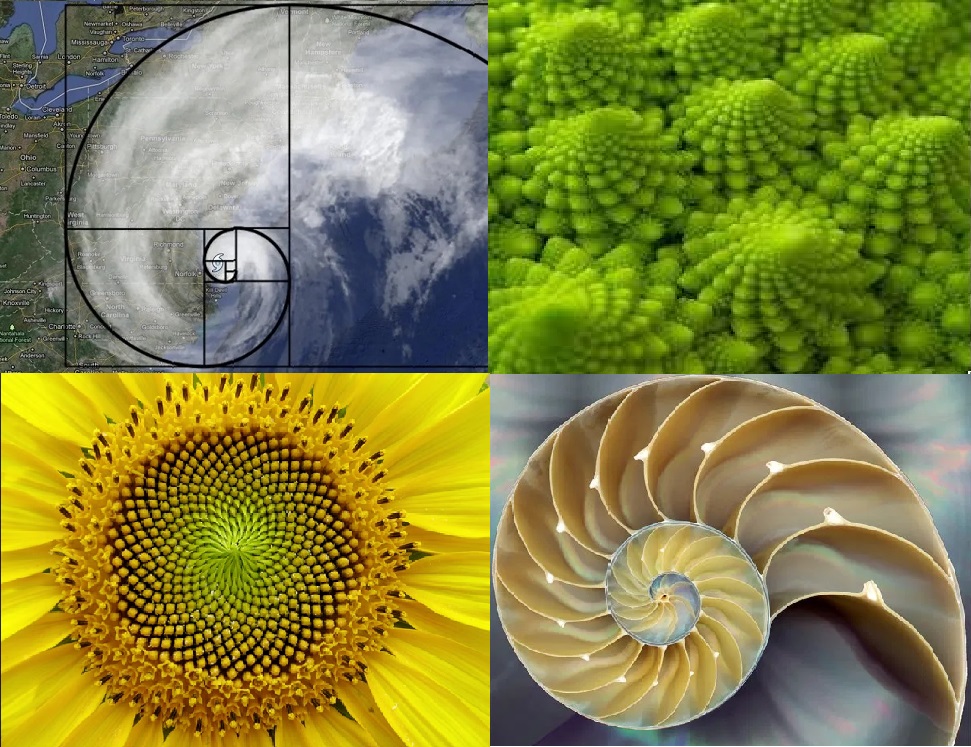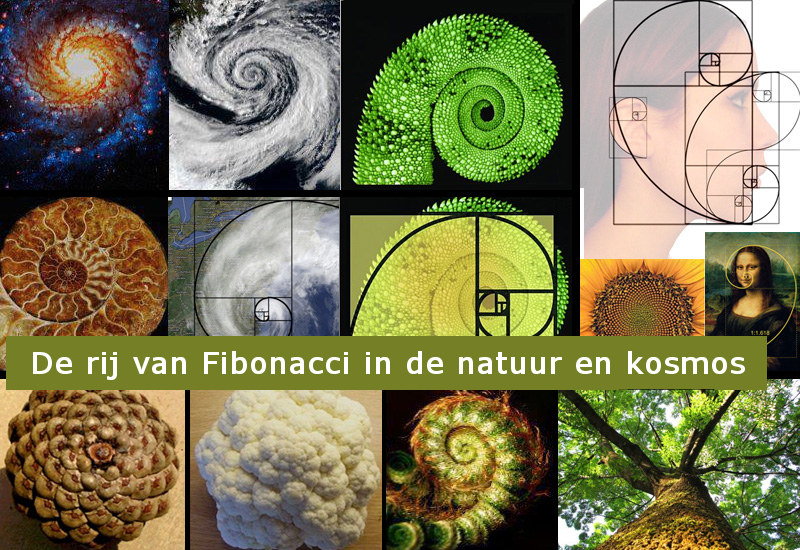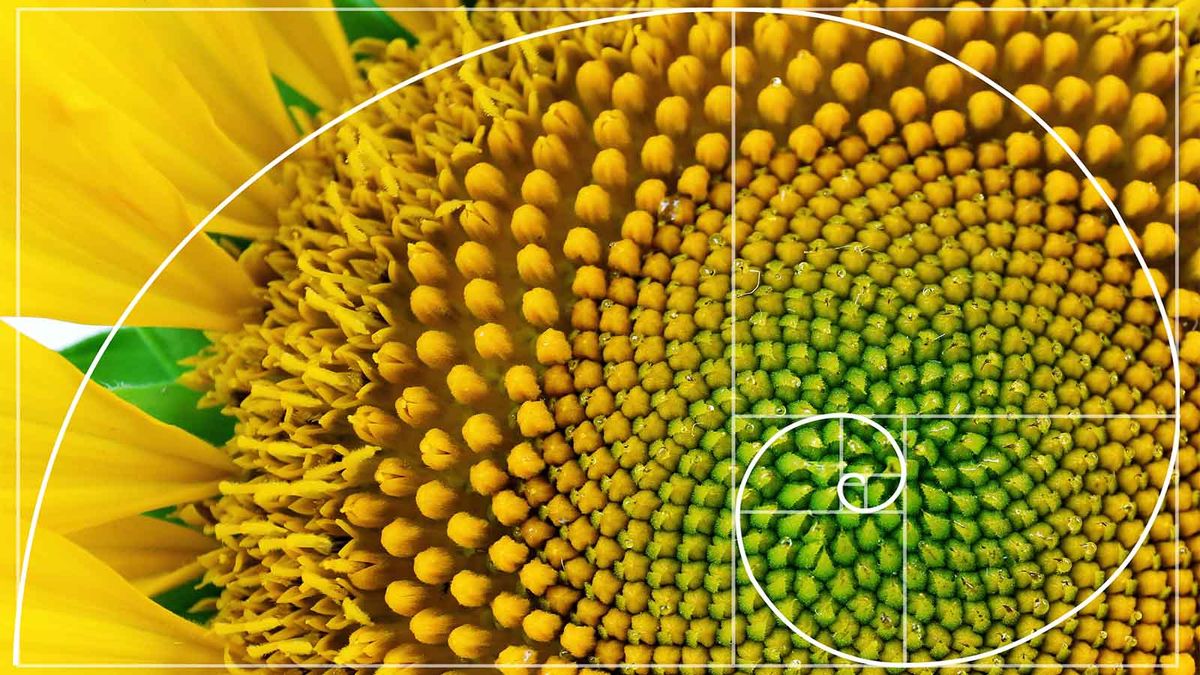De rij van Fibonacci

Fibonacci in Nature The Gartley pattern was outlined by H.M. Gartley in his book Profits
De reeks loopt tot in het oneindige door. De rij van Fibonacci in de natuur. In de natuur zie je de rij van Fibonacci onder andere terug in het aantal blaadjes dat een bloem heeft. Dit is namelijk altijd een getal uit de rij van Fibonacci. Boterbloempjes hebben vijf blaadjes, een lelie heeft er drie en een margriet kan er zelfs 34, 55 of 89.

Fibonacci spiral in nature. Arte, Geometría sagrada, Sagrado
The Fibonacci defines how the density of branches increases up a tree trunk, the arrangement of leaves on a stem, and how a pine cone's scales are arranged. Yet you will not see the Fibonacci everywhere, as nature has many different methods and shades of survival. Hang Fibonacci In Your Home

Gulden Snede Math4All
Fibonacci (/ ˌ f ɪ b ə ˈ n ɑː tʃ i /; also US: / ˌ f iː b-/, Italian: [fiboˈnattʃi]; c. 1170 - c. 1240-50), also known as Leonardo Bonacci, Leonardo of Pisa, or Leonardo Bigollo Pisano ('Leonardo the Traveller from Pisa'), was an Italian mathematician from the Republic of Pisa, considered to be "the most talented Western mathematician of the Middle Ages".

Fibonacci Sequence The Golden Ratio Beautiful macro photography, Spirals in nature, Patterns
De rij van Fibonacci wordt al genoemd in de Chhandah-shāstra, Kunst van het metrum, van de Sanskriet schrijver Pingala, omstreeks 450 v. Chr. of volgens andere datering omstreeks 200 v. Chr., [2] onder de naam maatraameru, Berg van de cadens.

The Fibonacci Sequence in Nature • Insteading
The Fibonacci sequence of numbers forms the best whole number approximations to the Golden Proportion, which, some say, is most aesthetically beautiful to humans. "Empirical investigations of the aesthetic properties of the Golden Section date back to the very origins of scientific psychology itself, the first studies being conducted by Fechner in the 1860s" (Green 937).

Found on Bing from Fibonacci Sequence Math, Fibonacci Spiral Art, Alex
Geskiedenis Die Fibonacci-volgorde kry sy naam van 'n Italiaanse wiskundige wat in die Middeleeue gewoon het: Leonardo van Pisa, ook bekend as Fibonacci (1175-1250). Leonardo het sy kinderjare in Noord-Afrika deurgebring en deur die Middellandse See gereis, waar hy geleer het oor die Indo-Arabiese syferstelsel en daaroor verheug was.

Fibonacci's Golden Spiral The Relationship between Maths and Nature NaturPhilosophie
2 min. lezen Wiskunde en natuur komen samen als we tussen al het groen speuren naar de Rij van Fibonacci en die nog vinden ook! In zijn boek 'Liber Abaci' presenteerde

Fibonacci_Sunflower Geometria naturaleza, Fractales en la naturaleza, Fractales
In mathematics, the Fibonacci sequence is a sequence in which each number is the sum of the two preceding ones. Numbers that are part of the Fibonacci sequence are known as Fibonacci numbers, commonly denoted Fn .

Sunflowers fibonacci spirals ThingLink Espiral de fibonacci, Numero aureo, Patrones matematicos
Fibonacci sequence, the sequence of numbers 1, 1, 2, 3, 5, 8, 13, 21,., each of which, after the second, is the sum of the two previous numbers; that is, the nth Fibonacci number F n = F n − 1 + F n − 2.The sequence was noted by the medieval Italian mathematician Fibonacci (Leonardo Pisano) in his Liber abaci (1202; "Book of the Abacus"), which also popularized Hindu-Arabic numerals.

De rij van Fibonacci
Fibonacci and the original problem about rabbits where the series first appears, the family trees of cows and bees, the golden ratio and the Fibonacci series, the Fibonacci Spiral and sea shell shapes, branching plants, flower petal and seeds, leaves and petal arrangements, on pineapples and in apples, pine cones and leaf arrangements.

Sezione aurea e sequenza di Fibonacci la bellezza é soggettiva?
71 Share 6.1K views 3 years ago GENT Wiskunde is niet enkel logisch, maar kan ook mooi zijn! De reeks of rij van Fibonacci is hier het perfecte bewijs voor! Overal in de natuur komen we.

The fabulous Fibonacci sequence in nature Science Vibe
Als je goed oplet, zie je dat de natuur veel ordelijker, systematischer en methodischer is ingedeeld dan het op het eerste gezicht lijkt. Als je De Da Vinci Code gelezen of gezien hebt, ken je vast wel de Fibonacci-reeks. Dat is een reeks van getallen waarbij de som van de twee voorgaande getallen gelijk is aan het eerstvolgende cijfer: 1 1 2 3.

7 Beautiful Examples Of The Fibonacci Sequence In Nature
Xn+2 = Xn+1 + Xn. Basically, each integer is the sum of the preceding two numbers. (You can apply the concept to negative integers, but we're only going to cover the positive integers here.) To find 2, add the two numbers before it (1+1) To get 3, add the two numbers before it (1+2) This set of infinite sums is known as the Fibonacci series or.

Pasquale Fuscaldo Fibonacci e la sezione aurea in natura
Je kunt daarbij denken aan symmetrie, de getallenreeks van Fibonacci en de gulden snede (golden ratio). Je zult zien dat je echt niet alleen aan vervelende dingen hoeft te denken als je aan een bijles wiskunde denkt! De beste leraren Wiskunde beschikbaar 4,9 (56 reviews) Adam 35€ /u 1 e les gratis! 4,9 (25 reviews) Paul 35€ /u 1 e les gratis!

Fibonacci Sequence
Een wiskundig meesterwerk: De Fibonacci-reeks. De rij van Fibonacci (de gulden snede), is een perfect voorbeeld van de relatie tussen wiskunde en kunst in zowel natuurlijke als door de mens ontwikkelde fenomenen. Iedereen kent het spreekwoord 'de gulden middenweg kiezen', en ook de voormalige Nederlandse munteenheid de gulden is natuurlijk.

Why Does the Fibonacci Sequence Appear So Often in Nature? usanewsology.in
Een jonge, Italiaanse man uit Pisa die graag reisde. Op een van zijn vele reizen raakte hij geïnspireerd door wiskunde en schreef het boek Liber Abaci. Dat boek werd erg belangrijk voor de rest van de geschiedenis van wiskunde. Fibonacci gebruikte het om Europa kennis te laten maken met het getallensysteem dat we nu gebruiken: 0 tot 9.